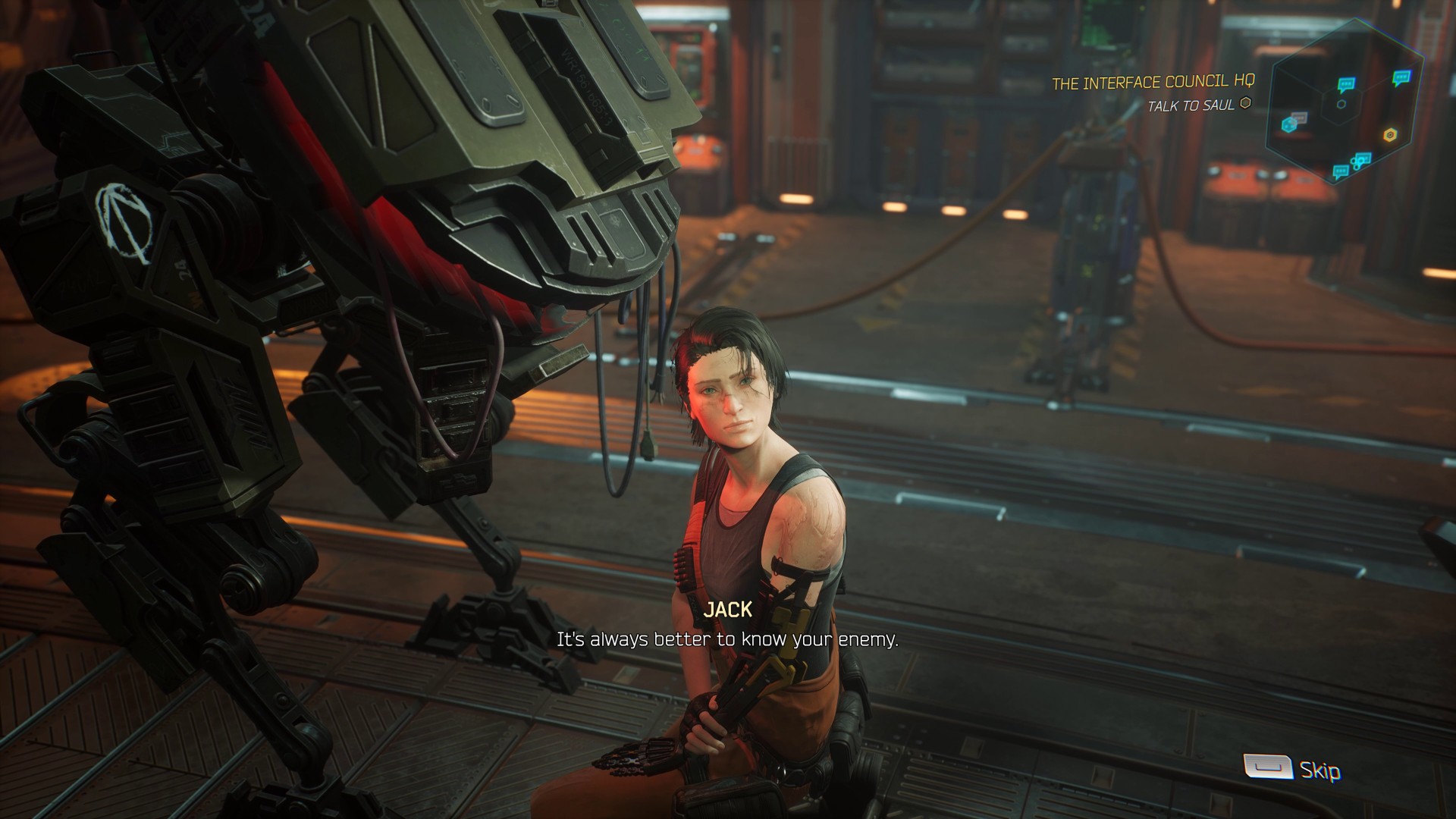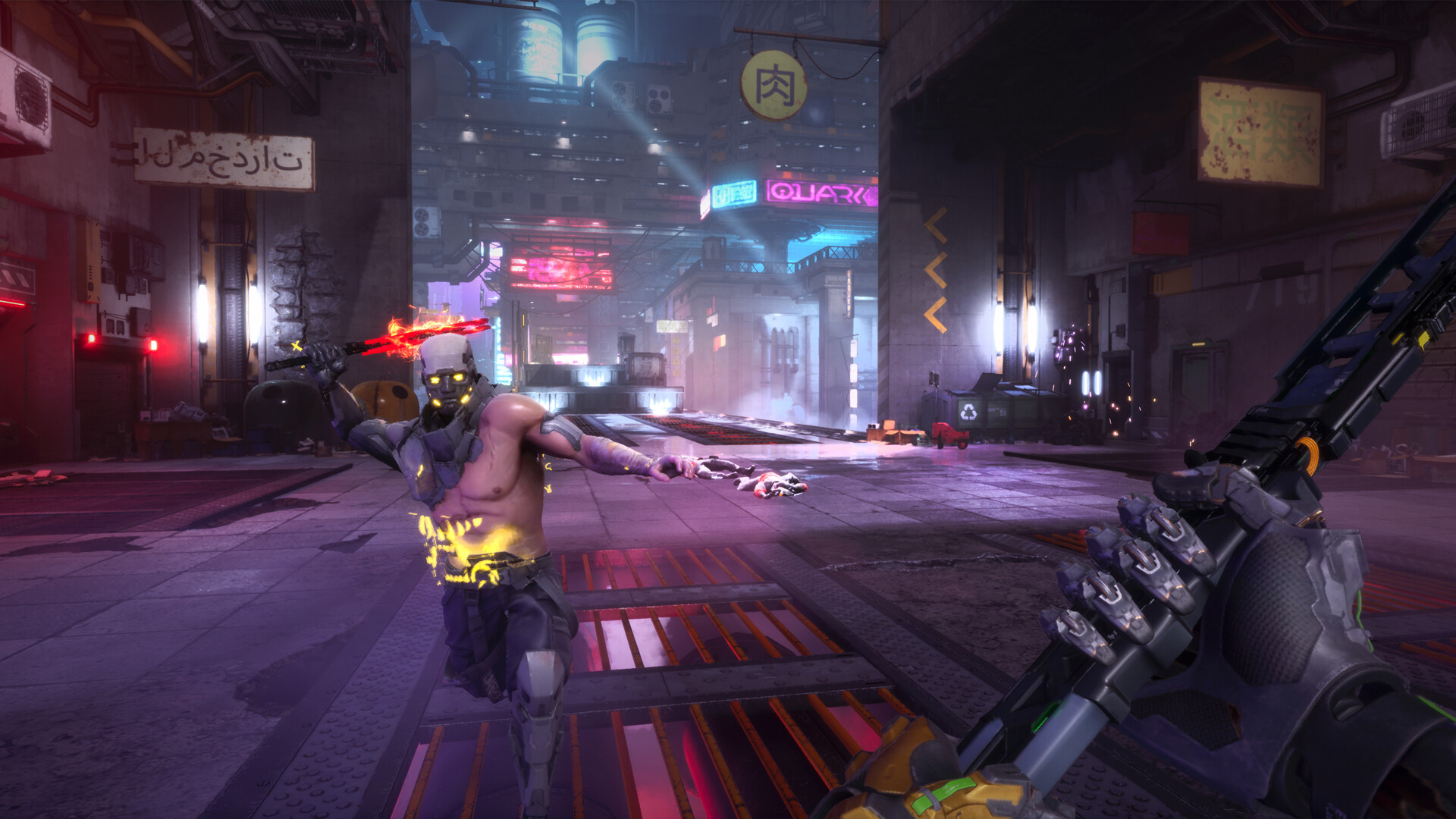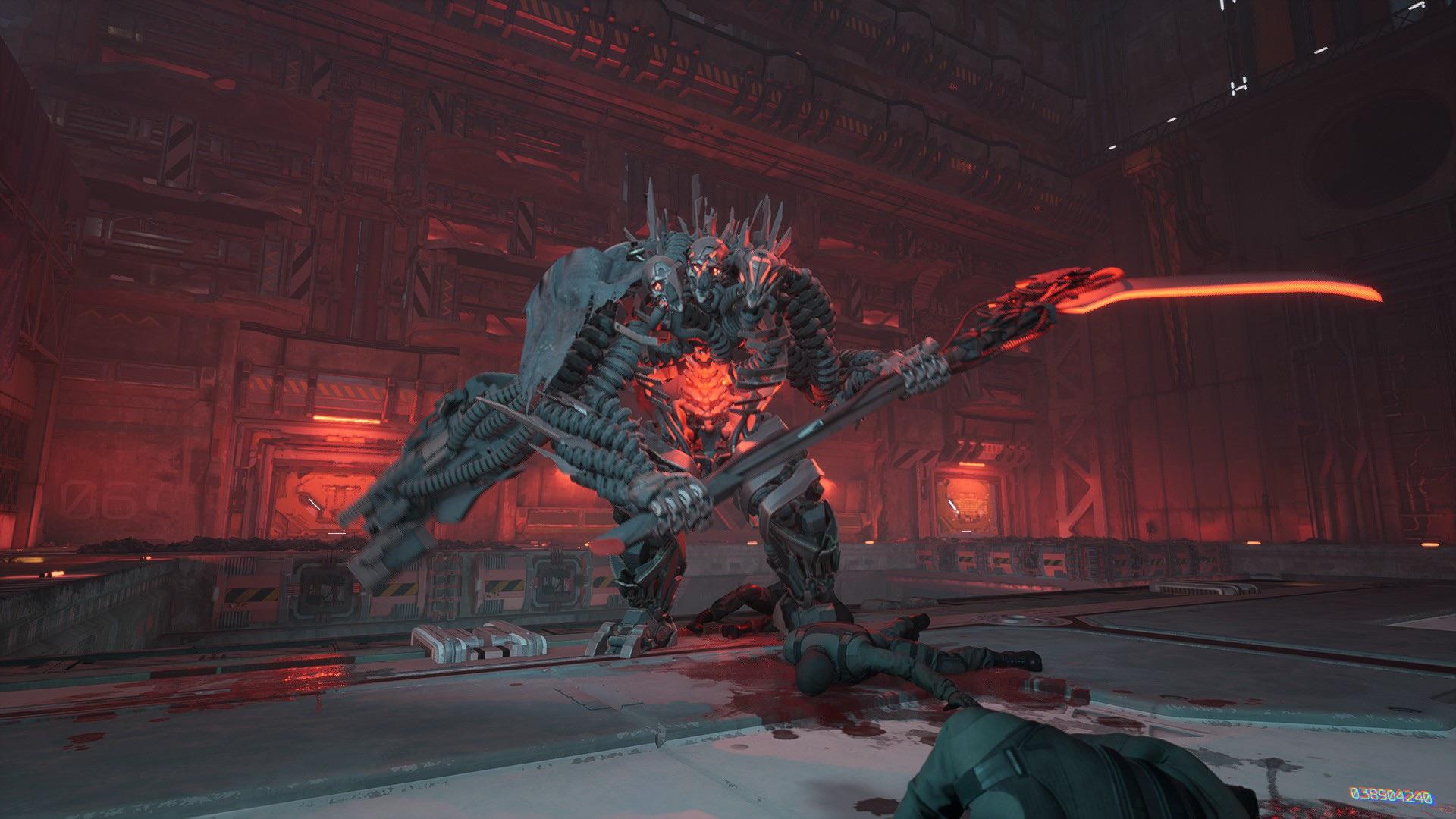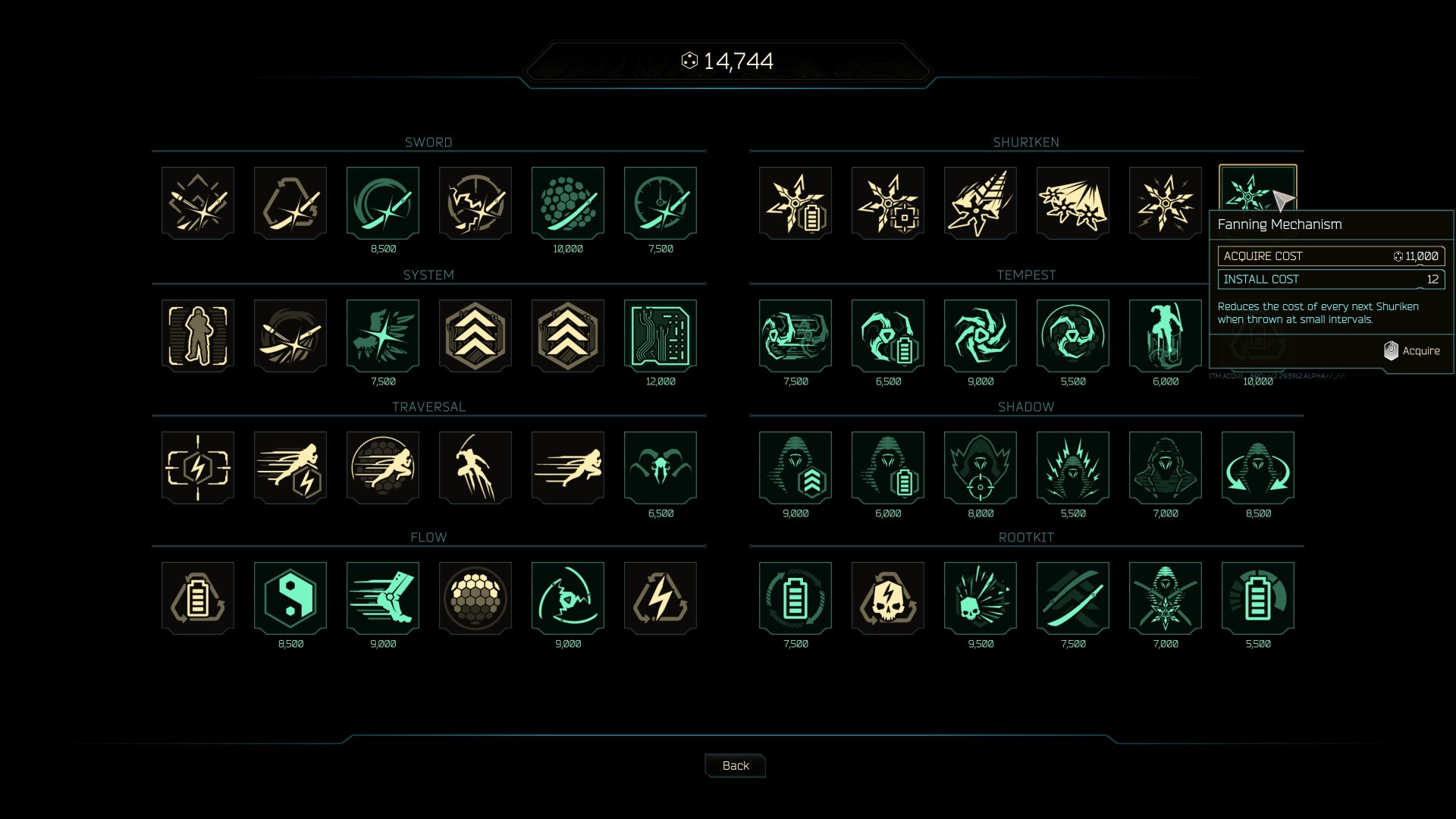
Ghostrunner 2 PC Review
2020’s Ghostrunner was a huge surprise for me. I went into that game with no idea what to expect, but what I got was a game that focused on bringing precisely sculpted-level design and action based around its fast, almost-puzzle-like gameplay. It was a game that focused on the live, die, repeat nature, as everything was killed in one hit, both player and enemies, but it never became infuriating thanks to how well-designed its gameplay was. Ghostrunner was a blast to play, a euphoric delight to overcome its challenges. The expansion, Project_Hel, kept this going by extending the game by a couple more hours. I was excited when the sequel was announced as Ghostrunner was one of the few games I hoped would earn a sequel; I wanted more of its challenge, and I was gagging for more Ghostrunner. I am happy to say the sequel is finally here with some neat ideas that manage to continue what made the original a great title while adding new mechanics and ideas to one of DarkZero’s favourite games of 2020.
Resuming around a year after where the first game left off, Ghostrunner 2 continues in the cyborg footsteps of Jack as he now helps the Climbers gang with missions throughout Dharma tower. During one such operation, Jack meets a bunch of uninvited guests, a group of ghostrunners who are reviving one of their fallen comrades. These then become the four main targets throughout the rest of the game’s 9-hour campaign. This time around, it feels there is an emphasis on delivering more about the world of Ghostrunner, as topics about what happened to the world, what lingers outside of the tower and how ghostrunners came to be are covered. There is plenty of dialogue over comms during missions and there is a downtime between most missions as there is a chance to talk to team members in the hub HQ, an area that also contains the shop to purchase upgrades and a rogue-lite minigame to unlock new skins for Jack and his equipment. The first game didn’t go into too much detail about Ghostrunner’s world, but the sequel makes things more understandable about many topics. It was good to finally understand the world that was always teased in the predecessor.

But in truth, while the story is nice to have, it was the cool theme of the game that made it awesome. The core gameplay of Ghostrunner 2 follows in the same steps as the first game. Around 2/3 or so of the game is set within the same Dharma tower, just different sections, but it almost feels like returning home for anyone who played the first Ghostrunner. What this means for gameplay is that the player kills any enemy, apart from bosses, in one hit, but the same also applies to the hero. This might seem a bit unfair, especially as enemies have a range of melee or projectile base weapons, but there are many tools at Jack’s disposal to use and this is how an unfair disadvantage suddenly becomes winnable and enjoyable to overcome.
The level design remains top-notch, well for 95% of the game, but we will get onto the new inclusion, the motorcycle, later, but for the most part, the levels are designed around using Jack’s abilities. As the game progresses and Jack earns more tools to use, the levels incorporate them into their creavitiy. This begins with wall running, dashing, sliding, Sensory Boost (slow time to help with dodging and placement of landing from wall running) and grappling hook. The design is then expanded with the introduction and return of the shuriken, which can be attached to specific walls to act as a hook point for the grappling hook, the shadow move, which drops a decoy that can used to bypass lasers or act as weight for platforms. The environment is taken to new heights towards the end of the game with a fresh attachment to Jack’s exoskeleton, the wingsuit, which opens the level structure for some cool experiences around the outside and sky heights of Dharma Tower. It makes me wish it was introduced sooner, but if there is another sequel, I hope this ability is in from the get-go as One More Level teases what could be done with such a mechanic added to Jack’s already mobile moving.

As the game gets to its climatic conclusion, players are expected to be gliding, running off walls, jumping onto floating platformers, using enemies to glide across places, slowing down rotating walls to jump through, grinding on rails, throwing shuriken and grabbing to them, and of course defeat enemies, who are still able to kill in one shot. There are a lot of things going on with the controls and being aware of the surroundings to be able to stay alive without falling to your doom, but thankfully, the controls are well designed so that it is not the game messing an input, but yourself, when you succumb to the many deaths that will happen in Ghostrunner 2.
More deaths will be from combat rather than platforming, as with the one-hit rule, the combat is at default challenging the first time through the campaign. These encounters are often in between the parkour and traversal elements, but those parkour abilities are brought into the combat scenarios as well to get to enemies in hard-to-reach places, so require a few of Jack’s movement abilities to reach them. All enemies must be defeated to progress, as a locked door will not open until this has been achieved. I have had it a couple of times where one enemy was left, and I was shot by them. Players must always have their wits about them thanks to the insta death. A map exists at the top corner to highlight enemies, but even then, all it takes is a hit to end Jack’s life. Luckily, respawning is instant back at the last checkpoint, which they are generously used throughout the game.

All the standard Dharma Tower foes return here. Standard melee merc, gun merc, machine gun merc, a mech with a giant wide laser beam, but there are some new inclusions to change the combat encounters. The religious foes have extension whips, like Ivy from Soulcalibur, one in each hand, which makes for a wide area hitbox. I was disappointed that the enemies that exist outside of the tower were in essence reskins of the enemies from within. These weird creatures and experimental foes are grey enemies that perform the same. The standard foe hits with their hands, the other has a gun, and the alien-like enemy that digs up from the ground launches green explosions like the jetpack enemies that shoot mines to the ground. I imagine this was done to keep the player’s understanding of the mechanics that have happened for the past five or so hours, but it feels like a cop-out to have these foes behave the same.
One slightly different thing is the tweaks to the combat that make it more forgiving than before. Stamina is one of the biggest changes, as this was never used in the original. This means that moves, such as the Sensory Boost, use stamina instead of their own bar. Stamina is also used to block projectiles. This means players no longer need to perfect parry attacks to survive them. Perfect parry is still important as blocking projectiles will not reflect back correctly to hit the enemy. Same for blocking melee, as the counter option only works on a perfect parry. The stamina blocking feels as if it was included to help people who struggled with the timing of perfect parry, and so have an option to at least defend themselves from danger for a short while until the stamina drains. Once empty, dashing or blocking cannot be performed until it charges back up.

Two other metres exist on the bottom left of the screen. The blue one is for the use of the three main abilities that can be switched using the number keys 1,2 and 3. These are the abilities I mentioned earlier, Shuriken, Shadow and Tempest. Using these will drain the metre and the replenishment speed is based on each skill’s default speed. Shuriken can be launched at enemies to stun them, and again to kill them. The stun, if the ability is set in the unlock skill tree, can be grappling hooked to pull yourself to them for the killing blow. Shadow diverts enemies to attack the clone, while Tempest pushes players to make them off balance for a quick moment. Shuriken was easily the most beneficial skill for me, as the stun was incredibly helpful, and the fact you can grapple hook towards them was icing on the cake.
Skills are unlocked through the shop during the HQ portions of the game. These upgrade eight parts of Jack’s arsenal (sword, system, traversal, flow, shuriken, tempest, shadow and rootkit). Once unlocked, these can be placed into the motherboard, which initially has limited space, but as memory shards are recovered in the missions – some hidden well, like the skins and other collectables – these will expand to allow more more slots for each upgrade. A few of my favourites are the Tactical Overlay, which makes enemies glow red for easy visibility, Hydraulics Adjustment for less stamina cost to dashing and Short Circuit which stuns enemies around Jack for a short amount of time on a perfect parry.

The other metre belongs to the Ultimate Ability; these are unlocked during the story rather than through a skill tree. There are five in total, but I never really used any but Flux, as it is overpowered. Flux shoots out a laser from Jack’s hand for a few seconds that will eradicate any enemy, even if they have shields. It is a great way to balance the odds in the player’s favour in a room littered with enemies. The other four ultimates allow for more Sensory Boost time, control an enemy, instant kill two enemies with a lightning dash and boost the normal abilities. The combination of ultimates and a varied skill tree allows people to build a Jack that fits their preferred way of playing Ghostrunner 2.
There is still an element I haven’t mentioned yet, the inclusion of the bike and its impact on the game as Jack moves to the desolate wasteland outside of the tower. I find the bike to mainly be a decent inclusion. The initial introduction has Jack riding the bike down the side of Dharma Tower dodging the environment and shooting guns or slashing at enemies as he drives past them. The next level is set in the wasteland having to get to a point. These are still linear levels, but between the driving segments are buildings that require Jack to go on foot and explore to find a switch, while traversing the usual way using his parkour skills and taking down enemies as previously done in the tower. There are even neat obstacles with barriers that require Jack to jump off the bike, let the bike go through the obstacle and then grapple hook back onto it to continue.
The problematic element is one level decides to change what Ghostrunner is all about, and funny enough, this level does not feel good to play. It’s a small open section that requires three switches activating in three towers that are spaced out. These are needed to open the bridge across the canyon. These towers are highlighted on the UI, but there is no map for this, so the idea is to follow the grey roads while riding the bike to find the objectives. The trouble is it is easy to go down the wrong track and get stuck in figuring out where to go. Gone are the single straight roads of the linearity that was created in the other bike levels. Now there is this small area to explore, which disjoints what otherwise is a game that often flows effectlessly. It’s one of the sour notes of the game’s campaign. The bike does not feel good when it is left to explore open sections. It was programmed to go in a line with not much directional input and this one level requires more than that. The bike can often get stuck in rocks and be painful to get out of these situations without wiggling, revving and jumping back on and off the bike. Reassuringly, it’s 30 minutes and one level before the game returns to its linearity.
These linear moments are what make Ghostrunner 2. This is where the core mechanics shine at their best. The challenge that comes with parkouring around masterfully crafted levels, combat set-pieces filled with enemies on the same one-hit playing field. The tension and suspense at trying to travel around the walls and platforms to dash in for a kill while other enemies take potshots at you. There are not many intense and skill-based euphoria moments in video games that feature such great platforming and instant death moments with enemies as the dance that is performed between the player, enemy and the environment of Ghostrunner 2. This is why this game is a great follow-up to Ghostrunner, upholding what made the first a superb game with its wonderful controls and movement while keeping its artistic cyberpunk visuals, but it is a shame that it hiccups with one level that spoils the overall great package.
